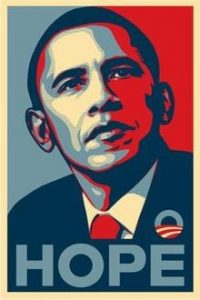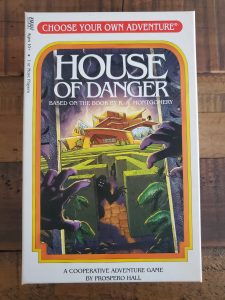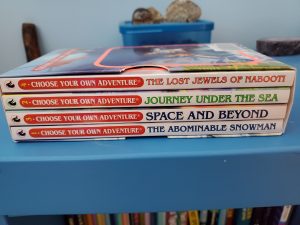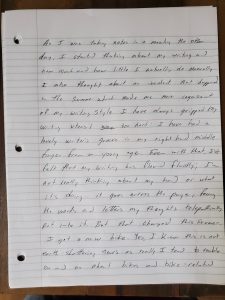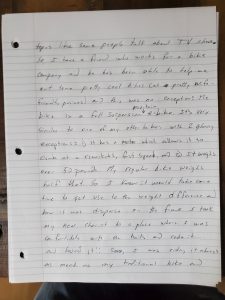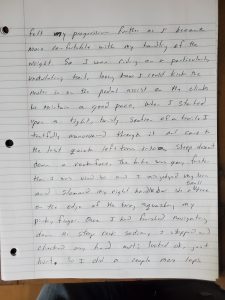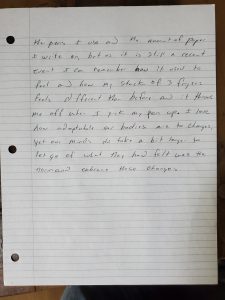“The concept of Design emphasizes the relationship between received modes of meaning (Available Designs), the transformation of these modes of meaning in their hybrid and intertextual use (Designing), and their subsequent to-be-received status (The Redesign).”
The New London Group. (1996), p. 81
The process of my redesign of Task One, What’s in Your Bag?, was more challenging that I thought it would be. Transforming the assignment from a traditional text explanation of a visual picture to something else seemed easy at first; a quick PowerPoint of everything in my bag and their uses or a podcast of myself describing the contents. But then I went back to the idea brought up by The New London Group of trying to ensure that individual differences are not barriers to educational success (The New London Group. (1996), p. 61). If I redesign in a purely visual form, how does that help students who are visually impaired? If I redesign in a purely audio form, where does that leave students who are visual learners or English language learners who need the scaffolding of a visual representation as they are learning? I remember French class in high school, where we would listen to tapes of French being spoken, and I was lost. But when our teacher switched to a video and visuals were used to show representation of the words I started to understand more. It was this blending of these modes that I thought would be most beneficial to a student, so I fell on the idea of a video. Then, stepping back and watching my kids cemented it.
My kids watch videos to learn (yes, they watch videos to laugh at epic fails and see people do weird dances too but let me have this). Owen has taught himself origami by watching YouTube videos and has recently developed an origami slinky that not only descends the stairs like the old spring but rotates as it works its way down. Abby supplements her Band classes on the flute with more lessons online and has become very proficient at it. I won’t even mention how many times we have searched online for a video about a topic they about at school and wanted to know more. I myself have started recording Jamie Oliver shows and attempting to cook meals (and… patting myself on the back here, I’m getting to be an ok cook!). Videos seem to me to be a good example of The New London Group’s idea of “multiliteracies” (The New London Group. (1996), p. 63).
I knew I couldn’t do this alone so I gathered the professionals that were surrounding me; my family. But as we worked on this project, I tried to keep in mind the ideas of PostFordism (The New London Group. (1996), p. 66) and collaboration with my kids. Yes, I was in charge, but when it came to the things each kid took on, I stepped away and let them tell me what their “vision” was. Owen came up with the set, the personality of his character as my sidekick (he meant business), and sound effects, while Abby had carte blanche when it came to the sign and the filming of the video. Allowing them the opportunity to take a lead on certain things, instead of me telling them what to do, may have been more time consuming, but I believe the sense of accomplishment in the end and how proud they were of it when it was done was genuine and completely worth it.
Granted the redesign was definitely more time consuming than the traditional text assignment, I felt that it has more opportunity to benefit more learners with its multi-modal concept. Especially in an age of technology where anyone with a Wi-Fi connection can watch videos and learn about a plethora of subjects, we need to meet students on the level of learning they are accustomed to and not try to make them revert back to the stand and deliver model that most of us grew up with and kept us from being true collaborators in our learning.
By the way, I paid the kids in pizza…
The New London Group. (1996). A pedagogy of multiliteracies: Designing social futures. (Links to an external site.) Harvard Educational Review 66(1), 60-92.


